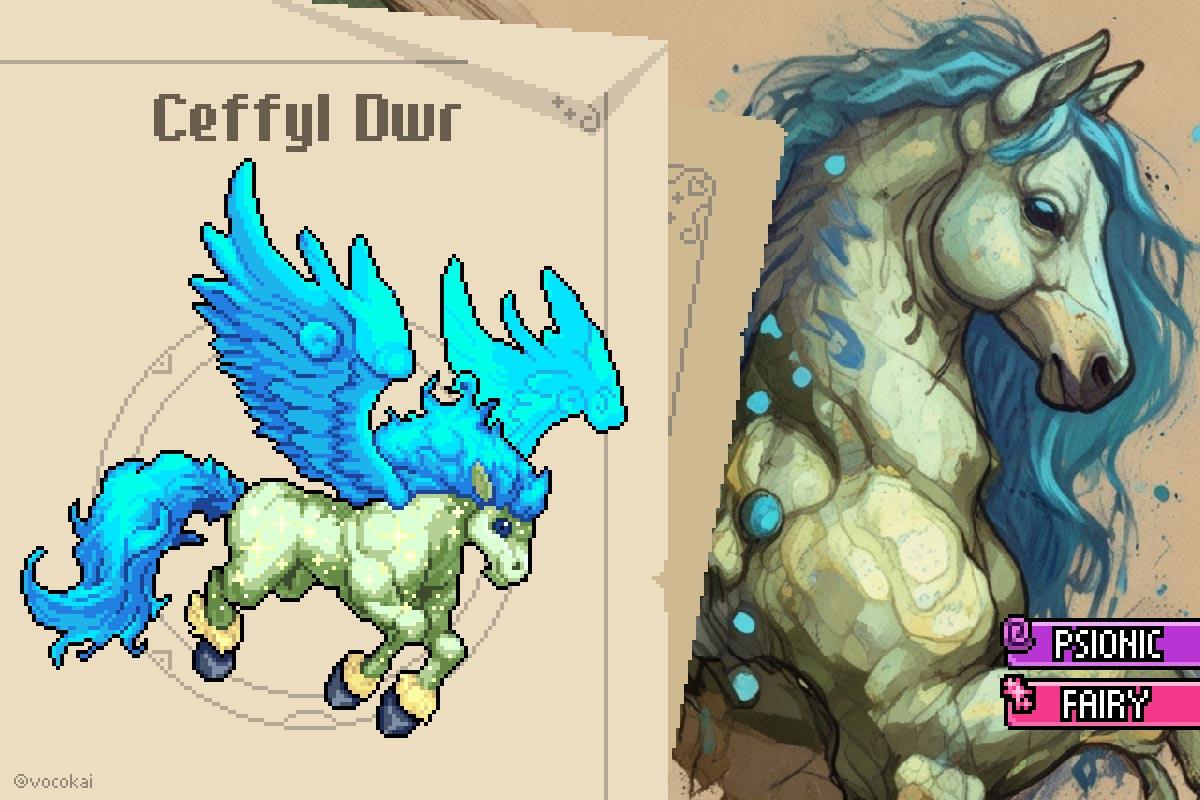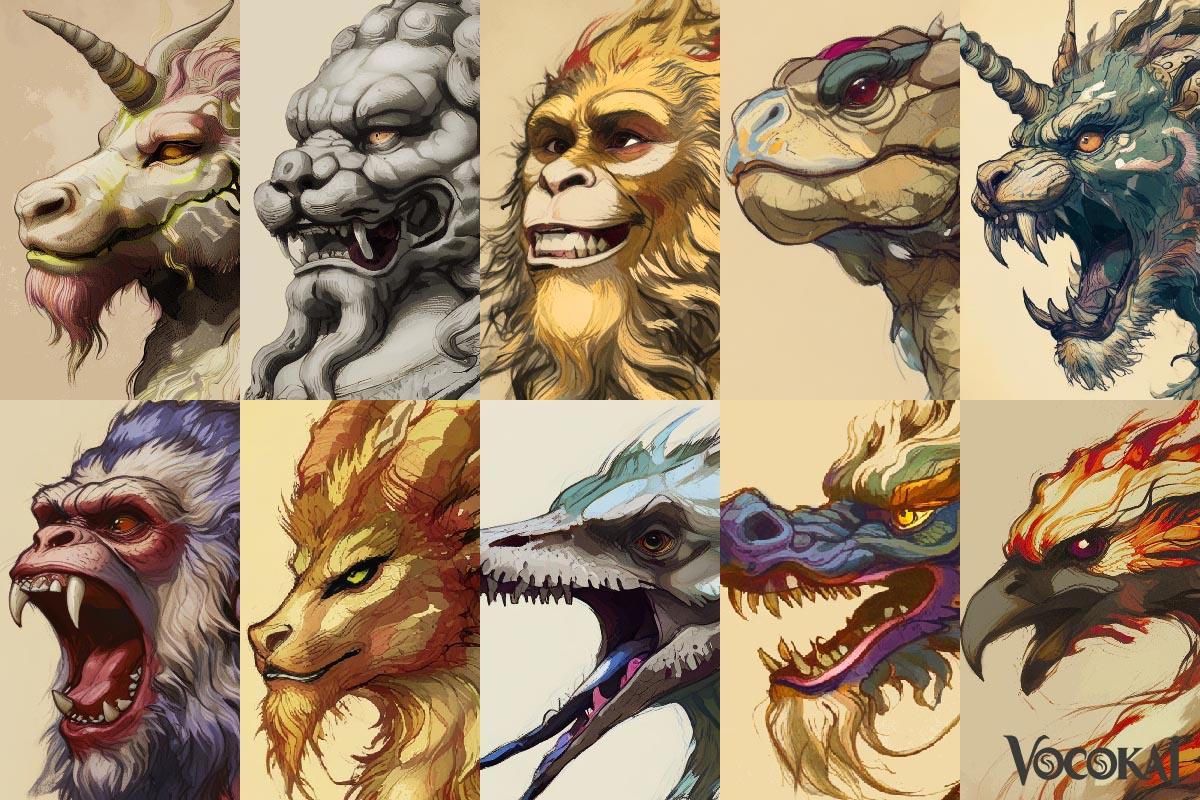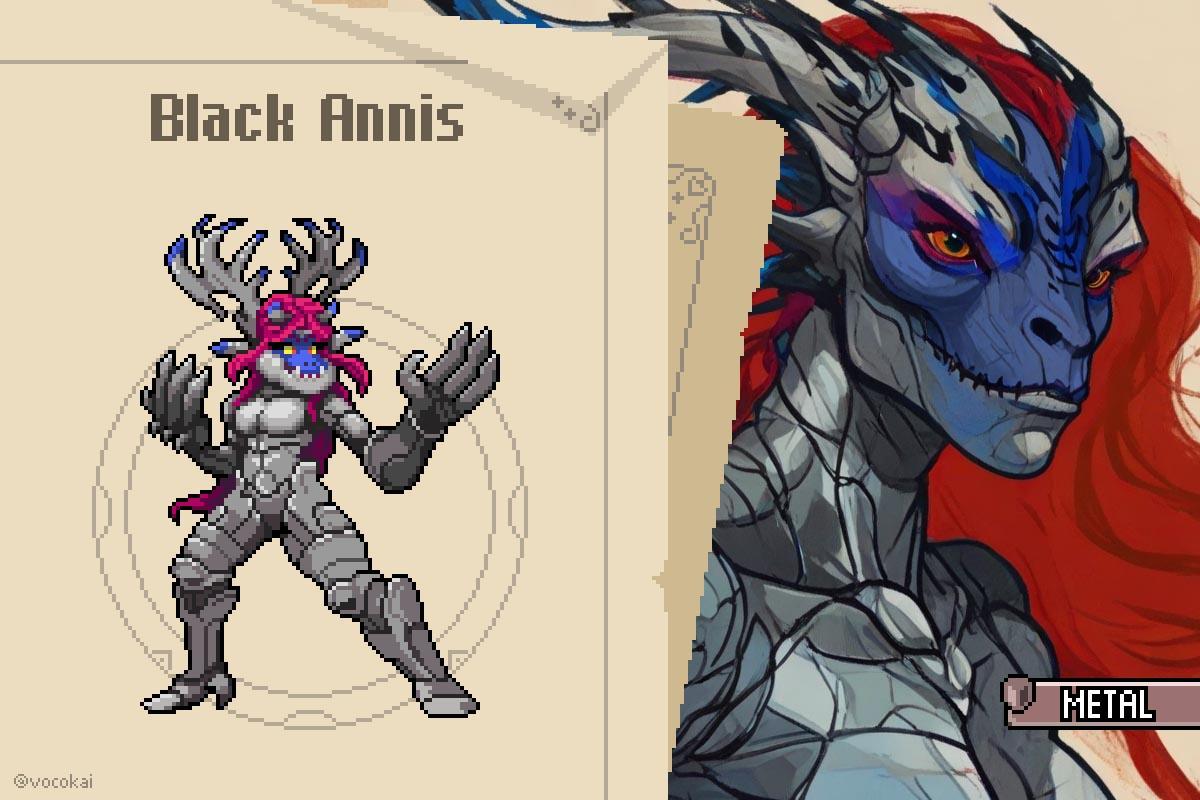Introduction: What is a Ceffyl Dwr?
The Ceffyl Dŵr in Welsh mythology is a fascinating creature from Celtic folklore. This spectral water horse is believed to live in rivers and lakes, deceiving people with its ghostly presence. The name Ceffyl Dŵr comes from Welsh, where “Ceffyl” means horse and “Dŵr” means water. Found in Wales and other Celtic regions, this creature remains a subject of myths and legends.
Inception: Origin of Ceffyl Dwr
The Ceffyl Dŵr in Welsh mythology is an old legend with mysterious origins. It appears in ancient tales as a supernatural being, often linked to fairy lore. Some believe it evolved from older Celtic myths about water spirits and shape-shifting horses.

Celtic Water Horse Myths
Similarly, other Celtic myths tell of spectral horses. For instance, in Scotland, the Kelpie shares traits with the Ceffyl Dŵr. Because both lure victims to watery fates. Interestingly, this deceptive behavior underscores the creature’s role. Becoming a test of human respect for the natural world. By warning that those who seek to exploit or disregard the hidden dangers of its domain will be punished.
Connection to Fairy Folklore
Additionally, the fairy Ceffyl Dŵr is sometimes linked to the fairy world. Because it vanishes into mist, reinforcing its mystical nature. Especially this shapeshifting behavior makes it difficult to track or capture. Emphasizing its role as a guardian that is part of the landscape, rather than a creature bound by it.


Symbol of Unpredictable Nature
The Ceffyl Dŵr’s is steeped in moral ambiguity. Making it difficult to categorize as malevolent or benevolent. Its actions often depend on the behavior of those it encounters. To those who respect nature, the Ceffyl Dŵr may simply vanish into the mist. However, to the arrogant or reckless, it becomes a trickster, leading them to danger. The Ceffyl Dŵr symbolizes the nature’s untamed force. Water is beautiful yet dangerous, just like this creature.
Evolution in Welsh Legends
Furthermore, legends of the Ceffyl Dŵr changed over time. Some versions describe it as harmless, while others say it is deadly


Appearance of Ceffyl Dwr
Generally, the Ceffyl Dŵr looks like a spectral horse. Its eerie presence makes it stand out..
- Ghostly Body
- Water-Soaked Mane
- Glowing Eyes
- Ethereal Wings
- Ghostly Body: The Ceffyl Dŵr appears mist-like, fading into the air, almost as if it were made of pure fog.
- Water-Soaked Mane: It has a flowing mane, always dripping wet, leaving behind a trail of shimmering droplets..
- Glowing Eyes : Its eyes shine in the dark, hypnotizing travelers, drawing them closer with an otherworldly glow..
- Ethereal Wings: Legends describe the Ceffyl Dŵr with ghostly wings, allowing it to glide through the air before vanishing into the mist..

Abilities: What are their powers?
Powers
The Ceffyl Dŵr has supernatural abilities, making it both fascinating and terrifying:
- Shape-Shifting – Can change form into mist.
- Illusions – Creates visions to deceive travelers.
- Flight – Some myths say it can fly.
- Water Manipulation – Controls surrounding water.
- Hypnosis – Entrances people with glowing eyes.
- Invisibility – Disappears at will.
- Supernatural Strength – Can carry great weight.
- Immortality – Cannot be killed by normal means.
Weaknesses
Despite its power, the Ceffyl Dŵr has weaknesses. It avoids iron, as it repels magical beings. Also, some myths claim holy water can weaken it. Furthermore, tricking it with clever words may drive it away.
Behavior
While the Ceffyl Dŵr can appear as a serene and beautiful horse. This appearance often masks its more dangerous intentions. With similar behaviour as Kelpies. It is known to lure unwary travelers to their doom. By enticing them to ride on its back. Once mounted, it gallops at an alarming speed. Often heading straight toward deep waters. Then it will plunge into the depths, vanishing with its rider.
Though the Ceffyl Dŵr can be deadly. It also acts as a protector. In some tales, it is said to guard sacred lakes or rivers from pollution or desecration. Driving away those who would harm the natural environment. This protective behavior reflects the creature’s dual role as both a guardian spirit and a force of retribution. Embodying the balance between nurturing waters and their capacity for destruction.
Influence: Ceffyl Dwr in Current Society
The Ceffyl Dŵr, though lesser-known compared to other mythical creatures, continues to influence contemporary culture. particularly within Wales and among enthusiasts of Celtic mythology, such as Ceffyl Dŵr art, books and TV shows. Moreover, fantasy stories often feature spectral water horses. Additionally, it is popular in folklore studies and modern Celtic tales.

The Ceffyl Dŵr in Welsh mythology remains a mysterious legend. Additionally, its eerie presence continues to intrigue storytellers. Finally, whether as a fairy horse or a ghostly figure, it will always be part of Celtic folklore.
Did you like this article of The Ceffyl Dwr from Welsh Mythology? Discover more mythological creatures in our Creatures blog.
In addition, if you also like RPGs and Monster Taming games like Digimon, Pokemon, Temtem, Dragon Quest… Please check our game Vocokai main page or find more info of the project here. Vocokai is a classic RPG game developed by Aoying that allows you to hunt and control mythological creatures of different cultures of the world while you advance in a post-apocalyptic story bounded with many historical and mythological events from the past.

















